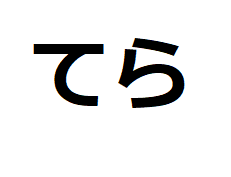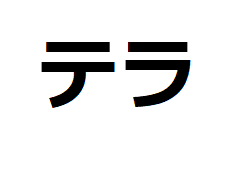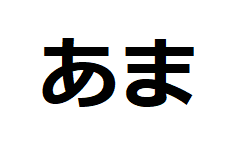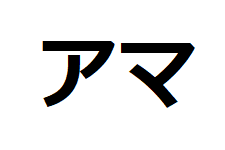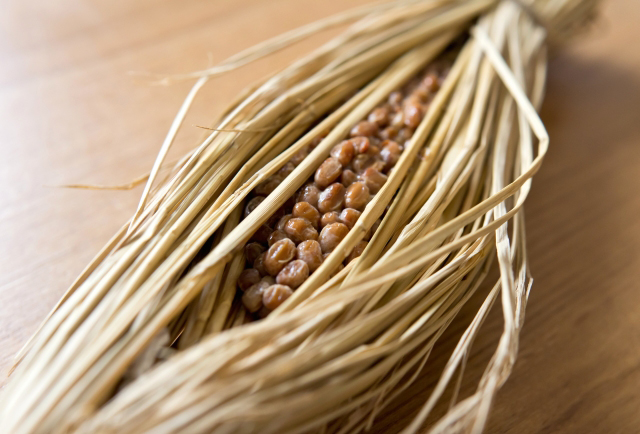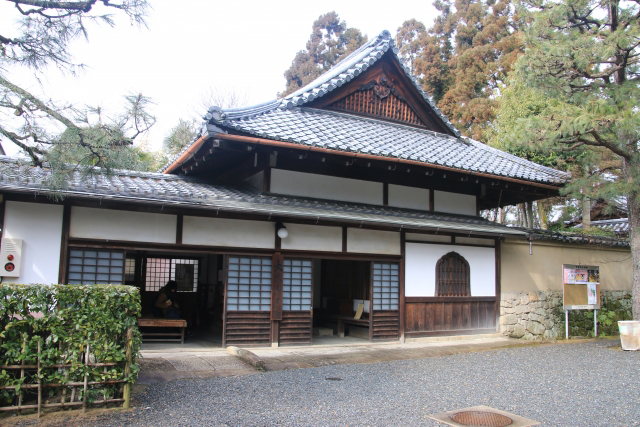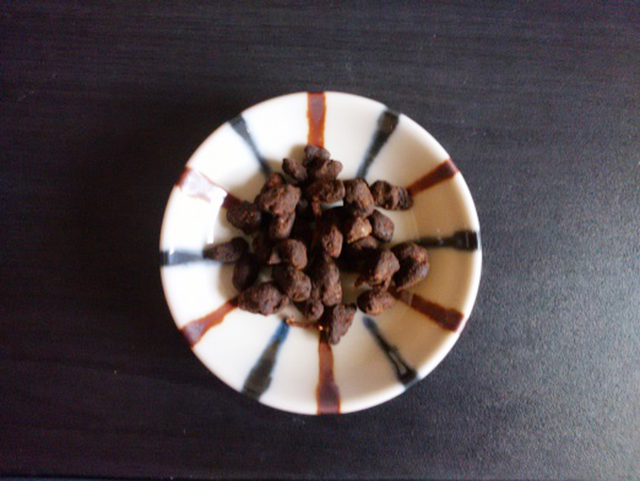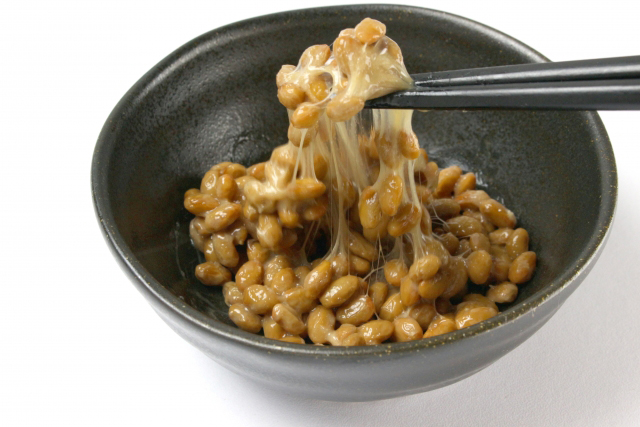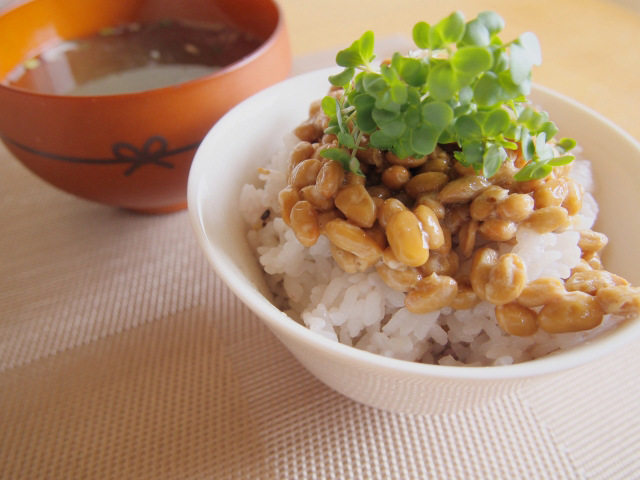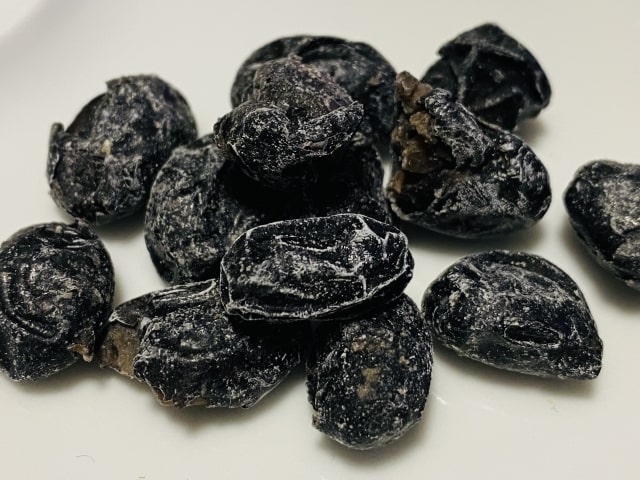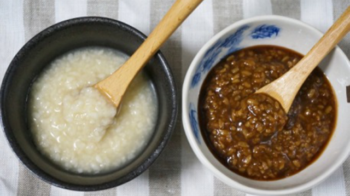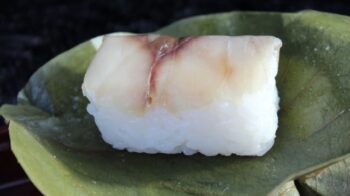Japanese Natto
Welcome to the world of Japanese Natto.
Many foreigners detest it.
However, it has varieties, not only the one which is sticky and smells bad.
Let’s look into its deep world.
Below is the contents of this page.
1. Tera Natto
Firstly, Tera Natto.
Tera means temple.
As this name shows, it came to Japan from China with Buddhist priests in the 7th century.
Mainly made in Buddhist temples (tera), it boasts a more authentic history than the popular sticky type.
In addition, the name Natto itself derives from this type.
Because it was made in the temple building called “Nassho (納所)” which commands all the general affairs of the temple.
– Recipe (Tera Natto)
The recipe is as mentioned below:
- place cooked soybeans on the rice mat in which Koji-bacteria can increase.
=> thus we produce soy- Koji - add salt in this soy-Koji and leave it for 3-4 months.
- dry these fermented soybeans
Lactic bacteria works vigorously throughout the process, giving Natto a unique flavour with acidity.
In addition, the fermentation of amino acid called tyrosine produces melanin pigment and makes Natto black.
For the same reason, soy sauce becomes black.
2. Sticky Natto
Secondly, the sticky type.
There is no doubt that it’s mainstream.
According to the most supported theory, the sticky type was born in the 14th century.
But some scholars believe that it had existed much earlier. Because the recipe is quite simple.
- place cooked soybeans in rice straw
That’s all.
The bacteria in straws called bacillus subtilis (Natto bacteria) changes soybeans into Natto.
But unfortunately, this production style is not suitable for mass production.
Therefore, today, the below method is common in factories.
- add Natto bacteria in cooked soybeans while they are still hot
- after fermentation, refrigerate them.
In the high end supermarkets, we can sometimes find Natto covered with straws.
However, these sterilised straws serve only as a receptacle.
Japanese breakfast
“Rice, Natto and Miso soup” could be the most ideal breakfast.
Firstly, the calorie of rice is very high.
But unfortunately, it contains almost no salt or protein and to supplement them, Miso and Natto come in.
Made from soybeans, both contain quality protein in large quantities and Miso contains salt. In addition, they contain enzymes produced in the process of fermentation.
By the way, the stickiness of Natto derives from glutamic acid which consists of the “umami” flavor.
Thus, they provide enough nutrition to work hard for the rest of the day.
3. Ama-natto
Thirdly, Ama-natto.
Just like Amazake , Ama (甘) means sweet.
Therefore, different from other types, it serves as sweets.
More precisely, covered with sugar, Amanatto is confiserie in French.
Although there are various sorts of confiserie in the world, such as marron glacé and fruit confits, the one using beans can be found only here in Japan.
Because of our love for beans, we use them in all the ways imaginable.
4. Kanji and Kana
1) Kanji
To learn Kanji (Chinese characters) is always interesting and beneficial to understand what the word means.
Through Kanji, we can virtually grasp not only the meaning of the word, but also the background it was born in.
Kanji for Natto is 納豆.
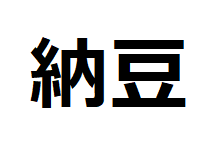
Firstly, 納.
This Kanji has its origin in 納所(nassho). As mentioned above Tera natto, it was the original place where they made Natto.
Secondly, 豆(tou).
豆 indicates a sacred container used to dedicate agricultural produces to gods.
General pronunciation for 豆 is ma–mé, whereas for 大豆, we pronounce 豆 as “zu”. And there’s still another pronunciation, that is to say, to(u).
To sum up, there are three pronunciations for 豆: 1) ma–mé, 2)zu, 3) to(u) and 納豆 adopts the pronunciation 3) to(u).
We can not forget that Tofu 豆腐 also uses this pronunciation.
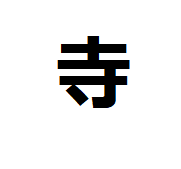
Next, tera 寺 for Tera Natto.
Today, 寺 means temple. But initially, it meant hands and feet in total. Since many people were working hard using hands and feet in temples, the Kanji 寺 came to indicate temple.
Incidentally, by adding 亻to the left, it becomes 侍(samurai). 亻means a person. Since samurais were working hard using hands and feet, 侍 came to indicate Samurai.
In those days, samurais were servants for aristocrats.
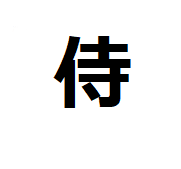
Lastly, ama 甘 for Amanatto.
According to the most supported theory,甘 illustrates a mouth (口) with some food inside.
Undoubtedly, this food was sweet.

2) Kana
There are two phonograms (kana) in Japanese: 1) Hiragana and 2) Katakana.
According to the most supported theory, both of them were formed by adopting one element of a Kanji character with similar sounding.
Originally, Hiragana were only for women. But today, it has by far the wider usage.
Talking of 2) Katakana, we use it mainly for foreign origin words.
Incidentally, there are 46 characters in both Hiragana and Katakana systems.
As for Natto, Hiragana is なっとうand Katakana is ナットウ.
As you can see, tu (つ/ツ) is smaller than other characters.
By writing it smaller, the pronunciation changes from natutou to nattou.
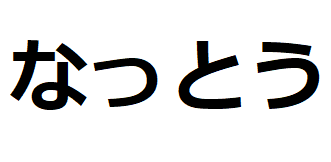
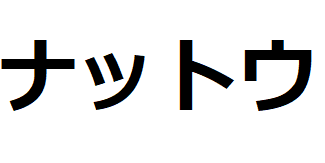
Next, tera and ama.
Hiragana for tera is てら and Katakana is テラ.
On the other hand, Hiragana for ama is あま and Katakana is アマ.
